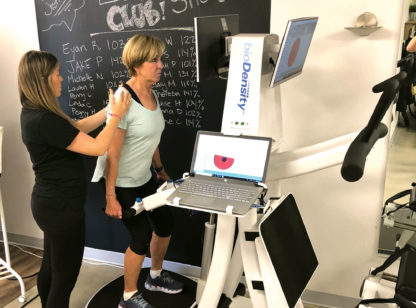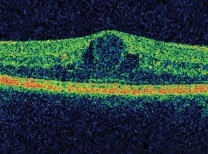Diabetes Mellitus (or Diabetes) currently affects 25.8 million people or 8.3% of the American population.[sup]1[/sup] Of those Americans 65 and over, diabetes affects 10.9 million or 26% of the population and increases the risk of death by twice as much as those individuals without diabetes.[sup]1[/sup] Diabetes has been shown to be the leading cause of several major medical disorders such as kidney failure, peripheral neuropathy, heart attack and stroke.[sup]1[/sup] Understanding how physical activity and exercise can significantly decrease your likelihood of acquiring diabetes may save your life.
Exercise is good for controlling their diabetes, but what many people do not know is how good physical activity is for their diabetes. Aerobic exercise (walking, cycling, jogging) for 40 minutes per week has been the primary focus for both reducing and controlling blood sugar/glucose levels.[sup]2[/sup] New research indicates that combining aerobic and resistance exercise will have an even greater and more lasting effect on blood sugar levels than aerobic exercise alone because of the lean muscle mass that is gained from resistance exercise.[sup]2-3[/sup] 20-30 minutes of resistance and aerobic activity 3 times per week is recommended. All the literature supports the need for continual monitoring from a health care professional to avoid complications such as hypoglycemia, especially if just starting an exercise program.[sup]2-4[/sup]
As good as physical activity is for the treatment of diabetes, it is just as good for the prevention of diabetes. For individuals who are at high risk, research shows that modest weight loss through diet and exercise can reduce the chance of acquiring diabetes by 40-60%.[sup]5[/sup] The research also supports that increasing energy expenditure of just 500 Calories (walking 1 mile a day at an 18 minute pace) per week through exercise alone can decrease risk by 6%.[sup]5[/sup]
The greatest challenge that is identified when starting an exercise program is an individual’s ability to stick with a program (adherence).[sup]3[/sup] If the training program is physical therapy-directed then it can significantly improve muscle strength and exercise capacity in diabetic individuals.[sup]3[/sup]
Diabetes is a life-altering disease that can lead to major health problems and even death. By taking the appropriate steps, talking with a health care professional, such your physical therapist, and performing appropriate physical activity and exercise, you can have the power to prevent and control diabetes.
Luke Gentry received his Bachelor of Human Kinetics with emphasis in Kinesiology at Trinity Western University and his Doctorate of Physical Therapy from Azusa Pacific University. Luke has continued his education completing an Orthopedic Residency and becoming a Board Certified Orthopedic Specialist. Luke can be contacted at: Avid Physical Therapy (760)202-0368, [email protected]
References: 1) Centers for Disease Control and Prevention. National diabetes fact sheet: national estimates and general information on diabetes and prediabetes in the United States, 2011. Atlanta, GA: U.S. Department of Health and Human Services, Centers for Disease Control and Prevention, 2011; 2) Marcus, Robin L. et al. Combined Aerobic and Eccentric Resistance Exercise Versus Aerobic Exercise Only for Diabetes. Physical Therapy. Nov 2008, vol 88, no. 11: 1345-1354; 3) Sigal, Ronald, et. al. Effects of Aerobic Training, Resistance Training, or Both on Glycemic Control in Type 2 Diabetes. Annals of Internal Medicine. Sept 2007, vol 147, no 6: 357-369.; 4) Taylor, David, et. al. Impact of Physical Therapist-Directed Exercise Counseling Combined with Fitness Center-Based Exercise Training on Muscular Strength and Exercise Capacity in People with Type 2 Diabetes: A Randomized Cinical Trial. Sept 2009, vol 89, no 9: 884-892.; 5) Warburton, Darren E.R., et. al. Health Benefits of Physical Activity: The Evidence. CMAJ. March 2006, vol 174, no 6: 801-809.












































Comments (0)